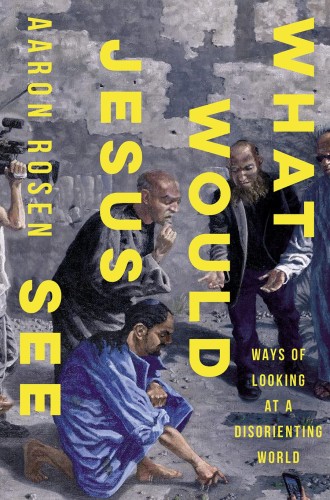The artistic vision of Jesus
Aaron Rosen finds that Jesus looks at the world the way artists see their subjects.
“Performance art” is the term Aaron Rosen uses in his new book to describe moments in Jesus’ ministry, and it quickly becomes apparent that this use of the term is not at all irreverent. What Would Jesus See is a remarkable and enlarging exploration of Jesus’ view of the world and his unrelenting attempts to help us see the same way. Rosen (a CENTURY columnist) believes that when necessary, Jesus uses “intentionally theatrical” words and actions to call our attention to the importance of how we see.
For example, when in John’s Gospel Jesus is called to arbitrate the fate of the woman taken in adultery (7:53–8:11), he famously pauses and writes in the sand. What he writes we do not know, but that is the point, Rosen says: to simply create a spectacle, a diversion to suspend the injustice that’s playing out. With this visual detour, Jesus leads her accusers from “certitude to confusion,” and the “scornful gaze” of the crowd is reflected back at them. Likewise, the mud and spittle Jesus places on the eyes of the blind man a few chapters later (John 9:1–12) is a ritual used for dramatic effect. Jesus could have healed the man with a word. But as the man washes his eyes and receives his sight, the sequence of events effectively dramatizes for the onlookers what constitutes true blindness and true vision.
Tackling a question as large as “What would Jesus see?” gives Rosen room to dive into the many surprising dimensions of sight that play out in the gospels, with relevance for the challenges of today’s political and social environment. “Eagle-eyed, unpredictable, and brilliant,” Jesus models how transformative right seeing can be. He sees others with empathy and heals them; he sees through the false piety of certain religious leaders and exposes them; he even teaches about how to “see” into the future, a matter of great interest not only in his day but also today, as climate change is upon us. Jesus’ stern teaching about the direct connection between the lust of the eye and adultery in the Sermon on the Mount spells out how vision and action are inextricably bound together. Rosen sums up: “For Jesus, seeing was doing.”





